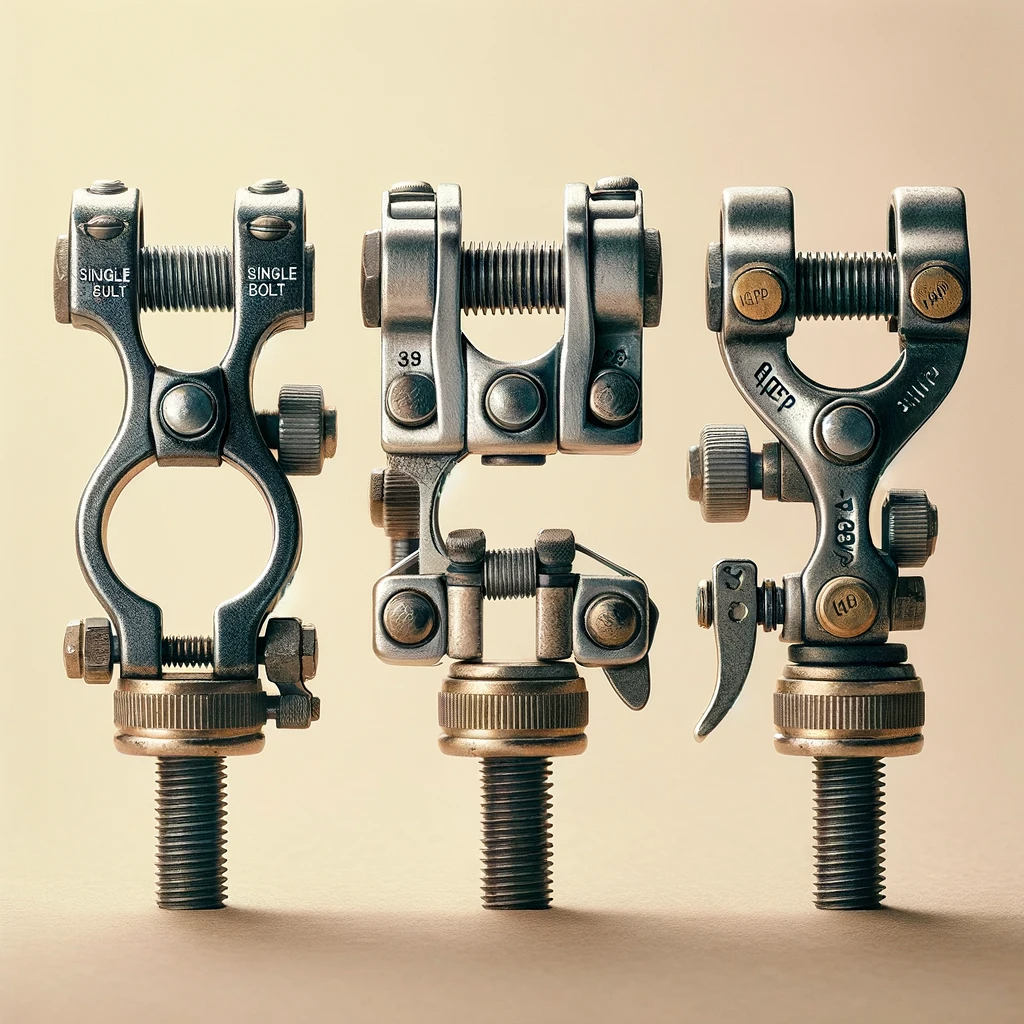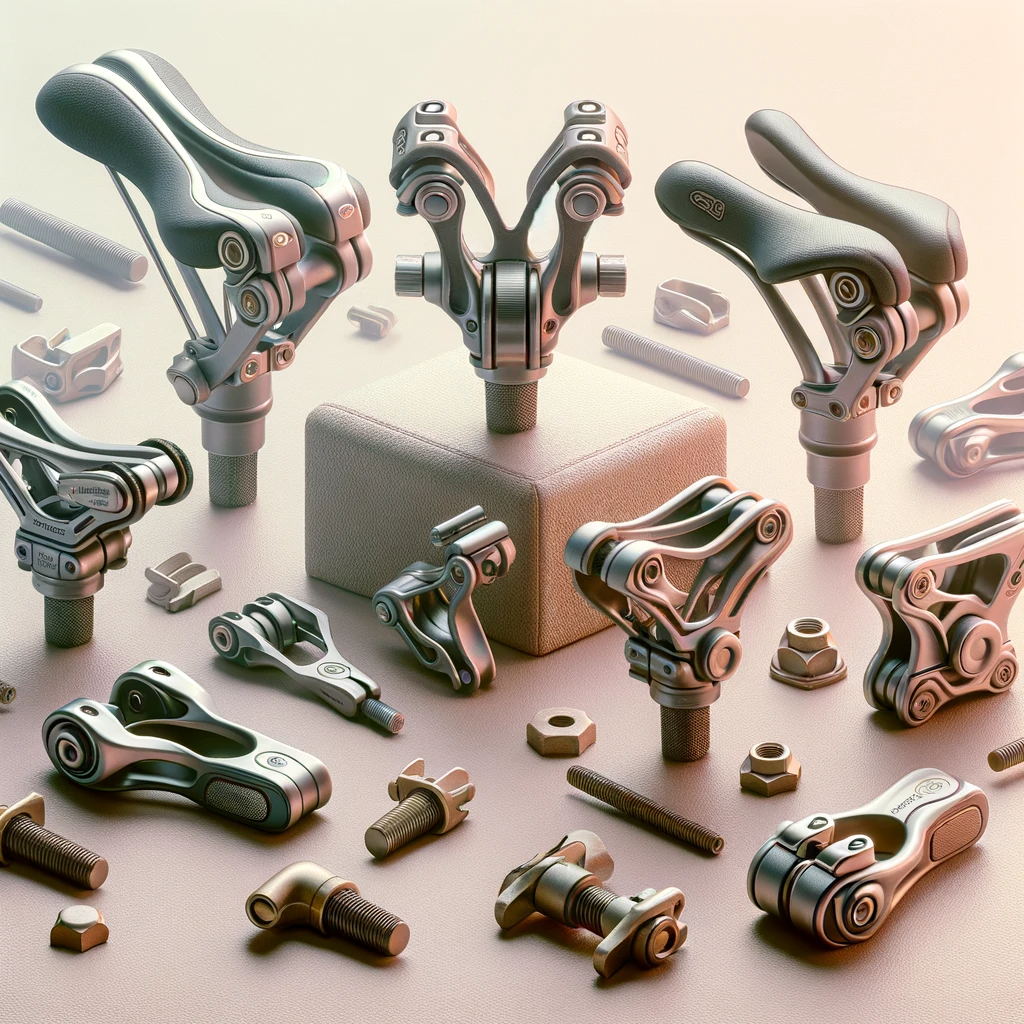Welcome to my article on bike saddle clamp types and uses. As a professional cyclist, I know how important it is to have a stable and comfortable saddle position while riding. One of the key components that make this possible is the bike saddle clamp. In this section, I will provide you with an overview of bike saddle clamp types and their various uses.
When choosing a bike saddle clamp, it’s essential to understand the different types available in the market. The right clamp can make a significant difference in your overall riding experience. So, let’s dive in and explore the different types of bike saddle clamps and their uses.
Key Takeaways
- Bike saddle clamps are essential components for a stable and comfortable saddle position while cycling.
- Understanding the different types of bike saddle clamps and their uses is crucial for selecting the right one.
What is a Bike Saddle Clamp?
As a professional cyclist, I understand the importance of having a properly secured saddle. A bike saddle clamp is a small but integral component that keeps your saddle attached to the seatpost, ensuring a comfortable and safe ride. Without a secure clamp, your saddle may slip or shift during rides, causing discomfort and even potential accidents.
The clamp consists of two parts, a lower section that attaches to the seatpost and an upper section that holds the saddle rails together. When tightened, these sections create a solid connection between the saddle and seatpost, keeping the saddle in place while riding.
There are different types of bike saddle clamps available in the market, each with its own unique features and uses. Understanding the differences between these types can help you make an informed decision when choosing the right clamp for your needs.
Common Types of Bike Saddle Clamps

If you’re in the market for a new bike saddle clamp, it’s important to recognize the different types available. Below are the most common types of bike saddle clamps:
| Type | Features | Uses |
|---|---|---|
| Single Bolt Clamp | Easy adjustability | Found on road bikes |
| Two-Bolt Clamp | Increased stability | Found on mountain bikes and some hybrid models |
| Quick-Release Clamp | Swift adjustments | Popular among riders who frequently switch between different saddles |
Each type of bike saddle clamp has its own unique advantages and uses. Understanding these differences can help you choose the right type of clamp for your bike and riding style.
Single Bolt Clamps: Features and Uses
When it comes to bike saddle clamps, single-bolt clamps are a popular choice for many riders. These clamps feature a single bolt that connects the saddle rails to the seatpost. Their simple design allows for easy adjustability and they are commonly found on road bikes.
One of the key features of single-bolt clamps is their ability to adjust the saddle angle with just one bolt. This makes it quick and easy to fine-tune your saddle position for optimal comfort and performance. Additionally, many single bolt clamps come with incremental markings on the bolt or the clamp body, allowing riders to easily remember their preferred saddle angle.
Another advantage of single bolt clamps is their lightweight construction. Since they only use one bolt, they are often lighter than other types of clamps, which makes them a popular choice for riders looking to reduce weight on their bike.
Single bolt clamps are also a great option for riders who prioritize ease of use. With just one bolt to adjust, it’s quick and simple to swap out saddles or make on-the-fly adjustments during a ride. This makes them popular among riders who frequently switch between different saddles for different types of riding terrain.
Overall, if you’re looking for a simple and easy-to-use bike saddle clamp, a single bolt clamp is a great choice. Their adjustability, lightweight construction, and ease of use make them a popular option for road riders and those looking for a fuss-free, reliable clamp.
Two-Bolt Clamps: Features and Uses
Two-bolt clamps are a popular choice for mountain bikers and some hybrid riders due to their increased stability and holding power. These clamps feature two bolts that tighten against the saddle rails and seatpost, keeping the saddle firmly in place during intense rides.
One key advantage of two-bolt clamps is their ability to hold heavier riders and absorb shocks during bumpy rides, making them a top choice for off-road adventures. They also provide increased adjustability, allowing riders to fine-tune the angle and position of their saddle for maximum comfort and efficiency.
Two-bolt clamps are available in a variety of sizes and materials, including aluminum and carbon, allowing riders to choose a clamp that is compatible with their seatpost and matches their bike’s aesthetics. Some two-bolt clamps even feature a quick-release mechanism, allowing for easy removal and installation of the saddle.
While two-bolt clamps may weigh slightly more than other clamp types, their benefits in terms of stability and adjustability make up for the extra weight. If you’re a mountain biker or a hybrid rider who values a stable saddle position, a two-bolt clamp may be the right choice for you.
Quick-Release Clamps: Features and Uses
Quick-release clamps are popular among cyclists who frequently switch between different saddles. These clamps allow for swift adjustments, thanks to their lever-operated mechanism which releases the saddle from the seatpost. This makes it easier to position the saddle for optimal comfort and performance.
The advantages of quick-release clamps extend beyond their adjustability. They also play a role in theft prevention, as they make it easier to remove the saddle for safekeeping. Additionally, they are ideal for riders who use one bike for multiple purposes, such as commuting and racing, and need to adjust their saddle height accordingly.
Quick-release clamps come in various designs, including those with single or double levers, and those with varying degrees of adjustability. Some models may require more effort to operate, resulting in a more secure fit, while others may be easier to adjust on the go, sacrificing some stability for convenience.
When choosing a quick-release clamp, consider your intended use and adjustability preferences. If you frequently switch between saddles, or need to make quick adjustments on the go, a lever-operated clamp may be the best option. However, if stability and security are your top priorities, a more traditional bolt-operated clamp may be more suitable.
Choosing the Right Bike Saddle Clamp
When it comes to choosing the right bike saddle clamp, several factors should be considered to ensure a comfortable and secure ride.
The first thing to consider is compatibility with your seatpost. Make sure to choose a clamp that matches the diameter of your seatpost, as the wrong size will not provide a secure fit.
Next, think about your adjustability preferences. If you like to make frequent adjustments to your saddle height, look for a clamp that allows for easy and precise adjustments.
Finally, consider your intended riding style. For road bikes, single bolt clamps are a popular choice due to their easy adjustability. Meanwhile, mountain bikers often opt for two-bolt clamps, which provide increased stability on rough terrain.
By considering these factors, you can select the right bike saddle clamp for your needs and enjoy a more comfortable and secure ride.
Maintaining and Adjusting Your Bike Saddle Clamp
Proper maintenance and adjustments are crucial for ensuring the longevity and optimal performance of your bike saddle clamp.
To maintain your saddle clamp, regularly wipe it down with a clean cloth to remove any dirt or debris. Use a mild detergent and warm water for more thorough cleaning. Avoid using harsh chemicals or abrasive cleaners that could damage the clamp’s finish.
It’s also important to lubricate your saddle clamp periodically to prevent rust and ensure smooth adjustability. Apply a small amount of lubricant, such as bike-specific grease or oil, to the bolt threads and other moving parts.
If you notice any signs of wear or damage, such as stripped bolt threads or a loose clamp, it’s crucial to address them immediately. Replace any worn or damaged parts as soon as possible to prevent further damage or potential safety hazards.
When making adjustments to your saddle clamp, start by loosening the bolts just enough to allow for movement but not so much that the saddle tilts or slides out of position. Once you’ve made your adjustments, tighten the bolts evenly and to the manufacturer’s recommended torque specifications to ensure a secure and stable saddle position.
Remember, proper maintenance and adjustments can go a long way in ensuring a comfortable and safe ride. By following these tips, you can keep your bike saddle clamp in top condition and enjoy your cycling adventures to the fullest.
Conclusion
In conclusion, selecting the appropriate bike saddle clamp is crucial for a comfortable and secure riding experience. It’s essential to consider factors such as the type of riding you do and the adjustability features you prefer. By understanding the different types of bike saddle clamps available, you can make an informed decision when purchasing one.
Proper maintenance is also important to ensure your bike saddle clamp functions effectively. It’s essential to clean and lubricate the clamp periodically and inspect it for any signs of wear and tear. By following these maintenance guidelines, you can prolong the lifespan of your bike saddle clamp and ensure it performs optimally.
Elevate your cycling experience today by selecting the right bike saddle clamp and maintaining it properly. Happy riding!
FAQ
Q: What is a bike saddle clamp?
A: A bike saddle clamp is a component that is used to secure the saddle to the seatpost. It plays a crucial role in maintaining the position and stability of the saddle while riding.
Q: What are the common types of bike saddle clamps?
A: The most common types of bike saddle clamps are single bolt clamps, two-bolt clamps, and quick-release clamps.
Q: What are the features and uses of single bolt clamps?
A: Single bolt clamps are known for their easy adjustability and are commonly found on road bikes. They allow riders to quickly fine-tune the saddle position for optimal comfort.
Q: What are the features and uses of two-bolt clamps?
A: Two-bolt clamps provide increased stability and are often found on mountain bikes and some hybrid models. They offer more precise adjustment options, allowing riders to find their preferred saddle position with ease.
Q: What are the features and uses of quick-release clamps?
A: Quick-release clamps allow for swift adjustments and are popular among riders who frequently switch between different saddles. They offer convenience and versatility, making it easy to swap saddles without the need for tools.
Q: How do I choose the right bike saddle clamp?
A: When choosing a bike saddle clamp, consider factors such as compatibility with your seatpost, adjustability preferences, and intended riding style. It’s important to select a clamp that fits well with your bike setup and meets your specific needs.
Q: How do I maintain and adjust my bike saddle clamp?
A: To maintain and adjust your bike saddle clamp, follow proper cleaning and lubrication practices. Regularly inspect the clamp for any signs of wear or damage and make necessary adjustments to ensure optimal performance.




